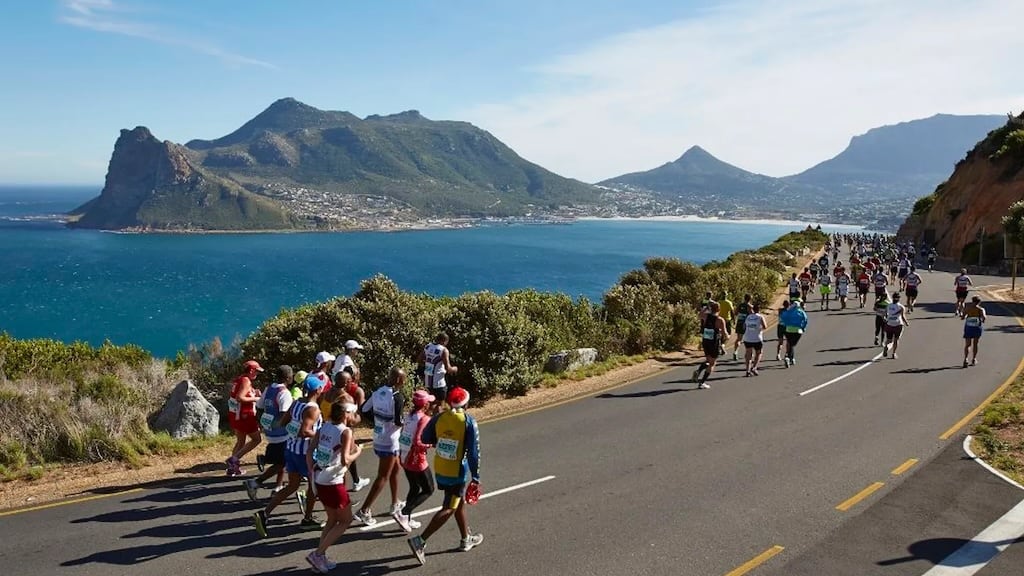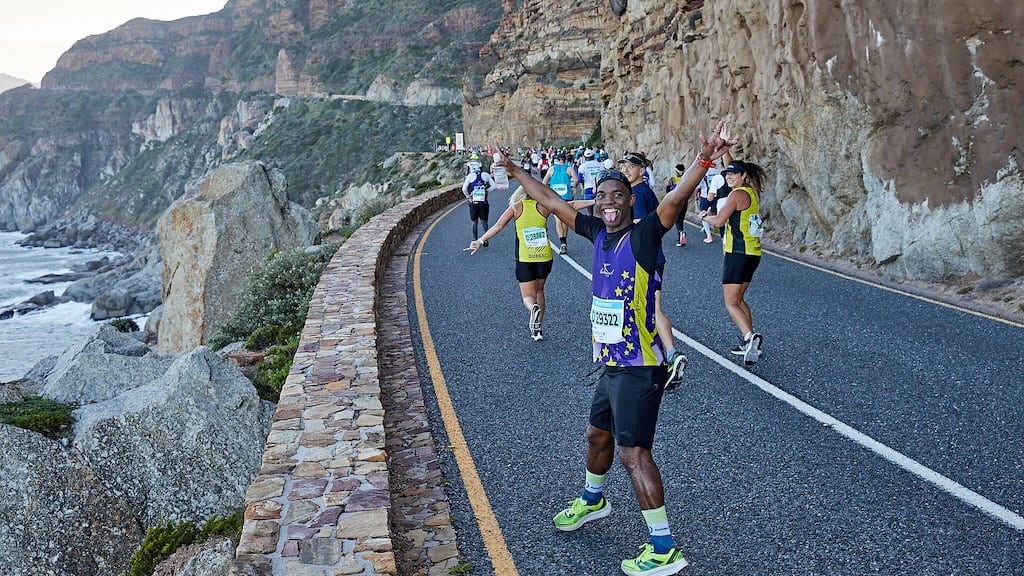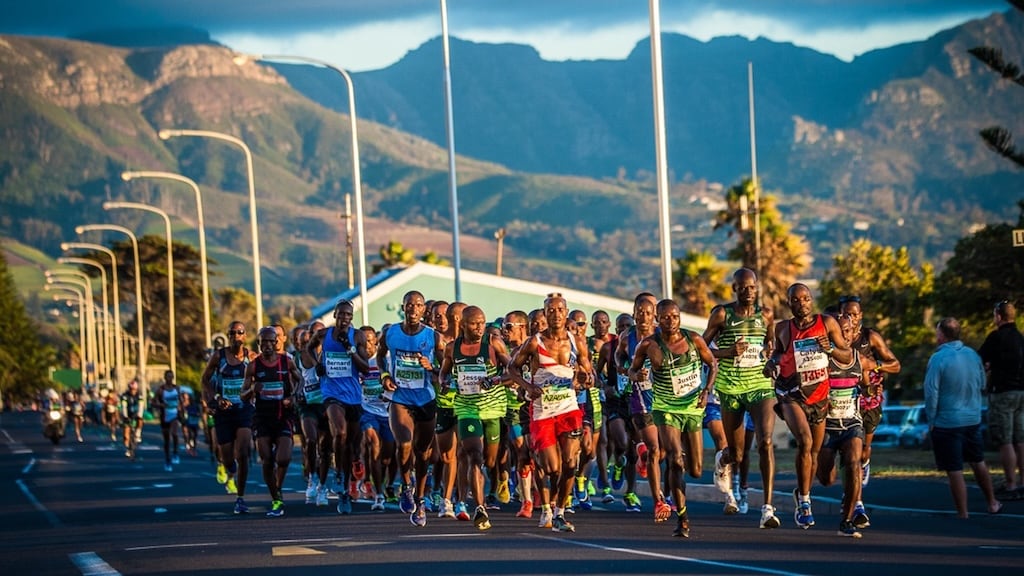🏃♀️ The World's Most Beautiful Marathon: Running the Cape Peninsula
The Two Oceans Marathon in South Africa, often heralded as the globe's most scenic footrace, is far more than just a demanding physical challenge. This annual event, now known as the Totalsports Two Oceans Marathon, transforms Cape Town's breathtaking landscape into an unparalleled arena of human endurance and community spirit. Taking place over a weekend, it features the gruelling 56-kilometre Ultra Marathon and a highly popular 21.1-kilometre Half Marathon. The Ultra Marathon is legendary, offering a route that showcases the majestic meeting point of the Indian and Atlantic Oceans, traversing iconic landmarks like Chapman's Peak and Constantia Nek.
The event, typically held around the Easter weekend, has become a national institution, injecting hundreds of millions of Rands into the local economy and captivating the attention of athletes and spectators from around the world. The atmosphere is electric, characterized by a unique blend of challenging terrain, world-class organization, and the overwhelmingly warm support of the Capetonian crowds. It is a bucket-list event that captures the essence of South African athletic endeavour and natural splendour. Runners can secure their entry through a highly competitive ballot system, details of which are released on the official Two Oceans Marathon website.


Historical Background
The Two Oceans Marathon was the brainchild of Dave Venter and his fellow Celtic Harriers clubmates. The inaugural race, then called the Peninsula 35-miler, took place on May 2, 1970, with a modest field of just 26 starters. The initial course, designed to trace a line around the beautiful Cape Peninsula mountains, was a bold, pioneering adventure. Against initial opposition, Venter persisted, and the race quickly gained recognition for its sheer difficulty and unparalleled beauty, establishing a new kind of ultra-running challenge in South Africa.
A significant milestone came in 1975 when the event was granted "multi-national" status, one of the first non-national or non-international events to be allowed this, enabling athletes of all races to compete during the apartheid era. This move was a quiet but powerful step toward inclusivity in South African sport. That same year, Ulla Paul became the first woman to officially complete the 56km distance within the cut-off time, cementing a tradition of inclusivity. Over the decades, the race has grown exponentially from its humble beginnings to become one of Africa's largest running events, celebrating its 50th anniversary in 2019 and continuously drawing sold-out fields for both the Ultra and Half Marathon distances. The history of the race is fully documented in various commemorative books and on the official organizers' page, showcasing its immense legacy as the second-largest ultra-marathon globally, only surpassed by the Comrades Marathon.
Typical Activities
The Two Oceans Marathon weekend is a festival of running that extends beyond the Ultra and Half Marathons. Top activities during The Two Oceans Marathon include:
- The Ultra Marathon (56km): The main event, held on Saturday, is a punishing and rewarding run along the entire spine of the Cape Peninsula. The route starts in Newlands, winds through Muizenberg and Fish Hoek, and includes the two famous ascents: Chapman's Peak Drive (often described as the most scenic part of the race) and the final challenging climb over Constantia Nek. The finish line is at the University of Cape Town (UCT) rugby fields, a site of immense emotion and celebration.
- The Half Marathon (21.1km): Held on Sunday, this race is also a major highlight, consistently selling out its approximately 16,000 entries, making it the largest Half Marathon in South Africa. While shorter, it is not without its challenges, featuring demanding climbs like Southern Cross Drive.
- The Two Oceans Marathon Expo: Held in the days leading up to the race, typically at the DHL Stadium in Green Point, the Expo is mandatory for all runners to collect their race packs. It also serves as a vibrant hub for running gear, sports science exhibitions, motivational talks, and a high-energy pre-race buzz for both athletes and supporters.
- International Friendship Run & Fun Runs: The weekend often includes smaller, non-competitive races, such as a scenic 5km run along the Sea Point promenade for international visitors and various fun runs for families and children, fostering a sense of community for all ages and fitness levels.
Traditional Customs
The Two Oceans Marathon, while a modern road race, has developed its own set of cherished traditional customs in South Africa's running community. One notable custom is the "Blue Number Club." Runners who complete 10 or more Ultra Marathons are inducted into this exclusive club and are awarded a permanent blue race number. This designation is a profound symbol of dedication, perseverance, and deep connection to the race, giving those runners a lifelong priority entry. The sense of achievement upon earning this blue number is a highly sought-after honour in South African distance running.
Another vital custom is the unwavering support from spectators. Crowds line the most challenging sections of the route, such as Constantia Nek and Chapman's Peak, with families, community groups, and local clubs setting up impromptu cheer zones. They offer not just encouragement, but often food, water, and even impromptu medical aid. This unique atmosphere, coupled with the tradition of runners "respecting the climbs" by conserving energy for the later stages, forms an integral part of the race's identity. Furthermore, the race has a strong charitable component, with runners traditionally using their efforts to raise millions of Rands for various community and environmental causes through the Two Oceans Marathon Initiative (TOMI).


What to Expect
First-time visitors and runners tackling the Two Oceans Marathon for the first time should plan meticulously for the experience. The race takes place in April, which is autumn in Cape Town. While the mornings can be cool (around 12°C at the start), the day can quickly warm up, sometimes pushing well above 25°C, making heat management and hydration a crucial strategy, particularly on the latter half of the Ultra route.
Logistics and Transport: The start in Newlands and the finish at UCT are logistically separate. Due to extensive road closures, runners are strongly advised to use the organized event shuttle services or e-hailing, avoiding personal vehicles near the start and finish lines. Pre-booked parking passes are often available but are extremely limited. It is essential to collect your race pack at the Expo, as no collections are permitted on race day.
Accommodation: Given the race's popularity, securing accommodation early is non-negotiable. Areas like Rondebosch, Newlands, and the Southern Suburbs are closest to the start/finish, while areas like Muizenberg and Fish Hoek offer proximity to the scenic, mid-race route. For spectators, the best spots for cheering are typically Chapman's Peak (if accessible by the time you arrive) and the final climb and approach to the finish line at UCT, where the energy is palpable.
Etiquette: Runners should adhere strictly to the cut-off times, especially the halfway point cut-off at 4 hours 30 minutes for the Ultra. Spectators are encouraged to be loud, supportive, and respectful of the runners and the natural environment. The event emphasizes a clean race, encouraging the proper disposal of all waste, including water sachets.
Conclusion
The Two Oceans Marathon stands as a monumental celebration of South African sport, heritage, and the dramatic beauty of the Cape Peninsula. It offers a powerful narrative that extends beyond physical stamina, encompassing themes of community, historical progress, and human spirit. Whether you are aiming for a sub-four-hour Ultra, completing your first Half Marathon, or simply there to soak in the carnival atmosphere, the sense of accomplishment and the stunning views of the Atlantic and Indian Oceans make it an experience unlike any other.
Don't miss the chance to be part of the world's most beautiful marathon. For all official details and entry information, please visit the organizer's website: twooceansmarathon.org.za.